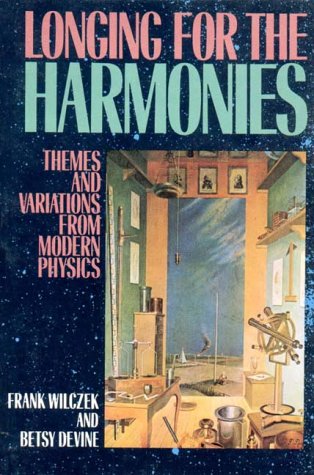

| LONGING FOR THE HARMONIES: Themes and Variations from Modern Physics Frank Wilczek Betsy Devine New York: W. W. Norton & Co., 1988 |
Rating: 4.5 High |
|||
| ISBN-13 978-0-393-02482-1 | ||||
| ISBN 0-393-02482-2 | 361pp. | HC/GSI | $19.95 | |
| Page 185: | "...the lines of equal temi1 are not horizontal, so they intersect an infinity of horizontal lines — an infinity of times." |
| In this example, as in all his "world line" graphs, Wilczek puts time on the vertical axis, space on the horizontal. He must mean "an infinity of spaces". No; Wilczek is correct here. With the clarity of a newly dawned 2004, I see that I had it backward. |
| Page 227: | "The strength of this coupling remains, however, is a pure number, the so-called fine-structure constant, which is a parameter of QED that QED itself is powerless to predict." |
| Here, there is an unwanted word — either "remains" or the first "is". Or, perhaps this is meant to say "remains . . . as a pure number". |
| Page 250: | "Two new colours are involved; distinct from the three colours that appeared in the strong interactions." |
| Here, the semicolon should be replaced by a comma. |

 To contact Chris Winter, send email to this address.
To contact Chris Winter, send email to this address.